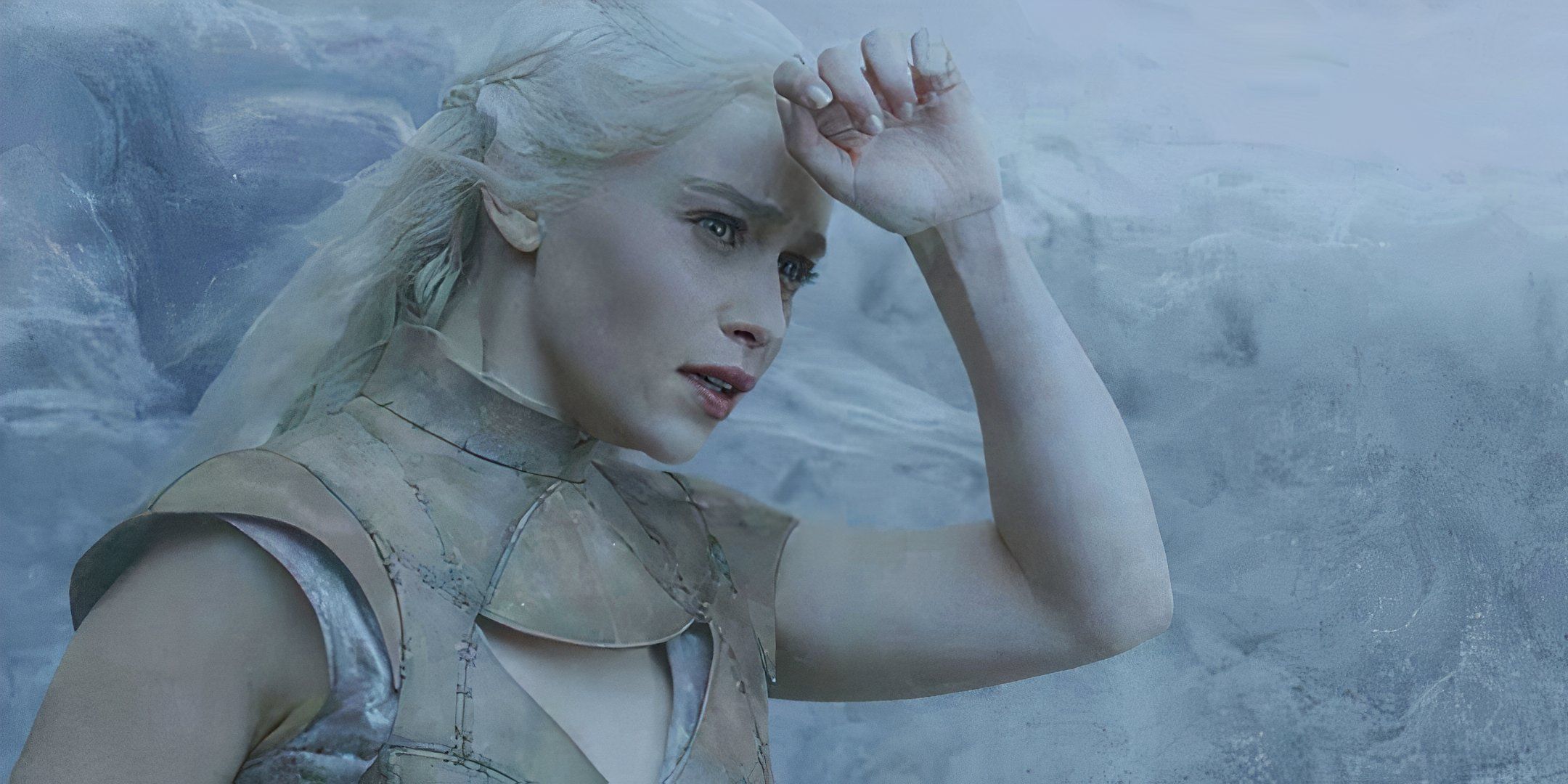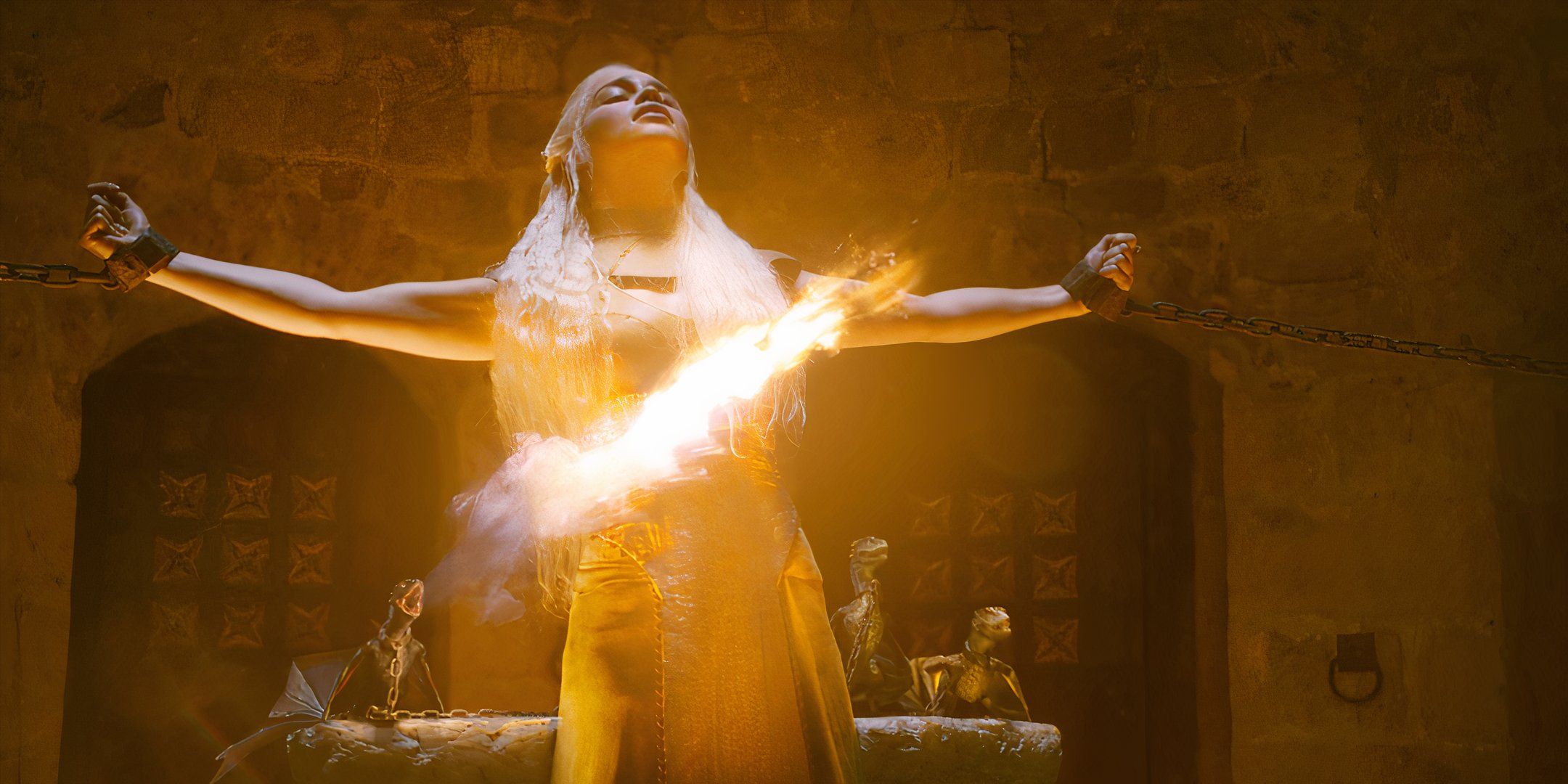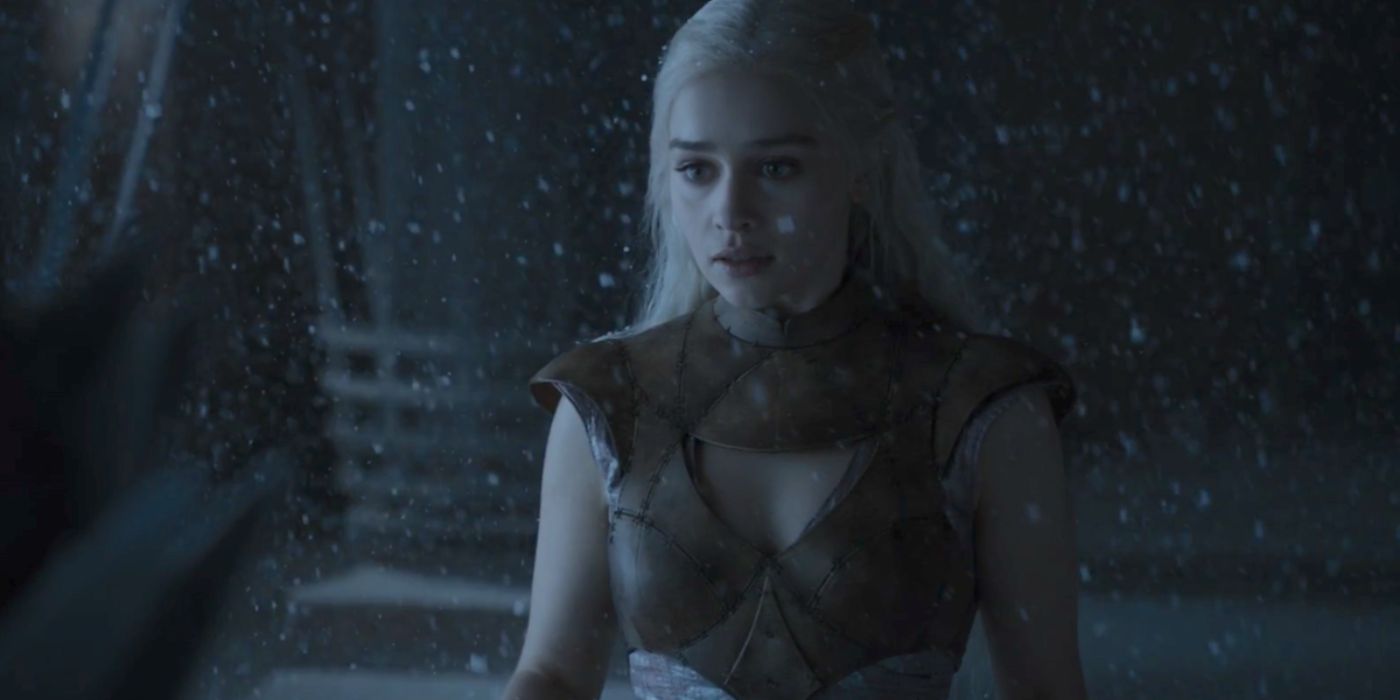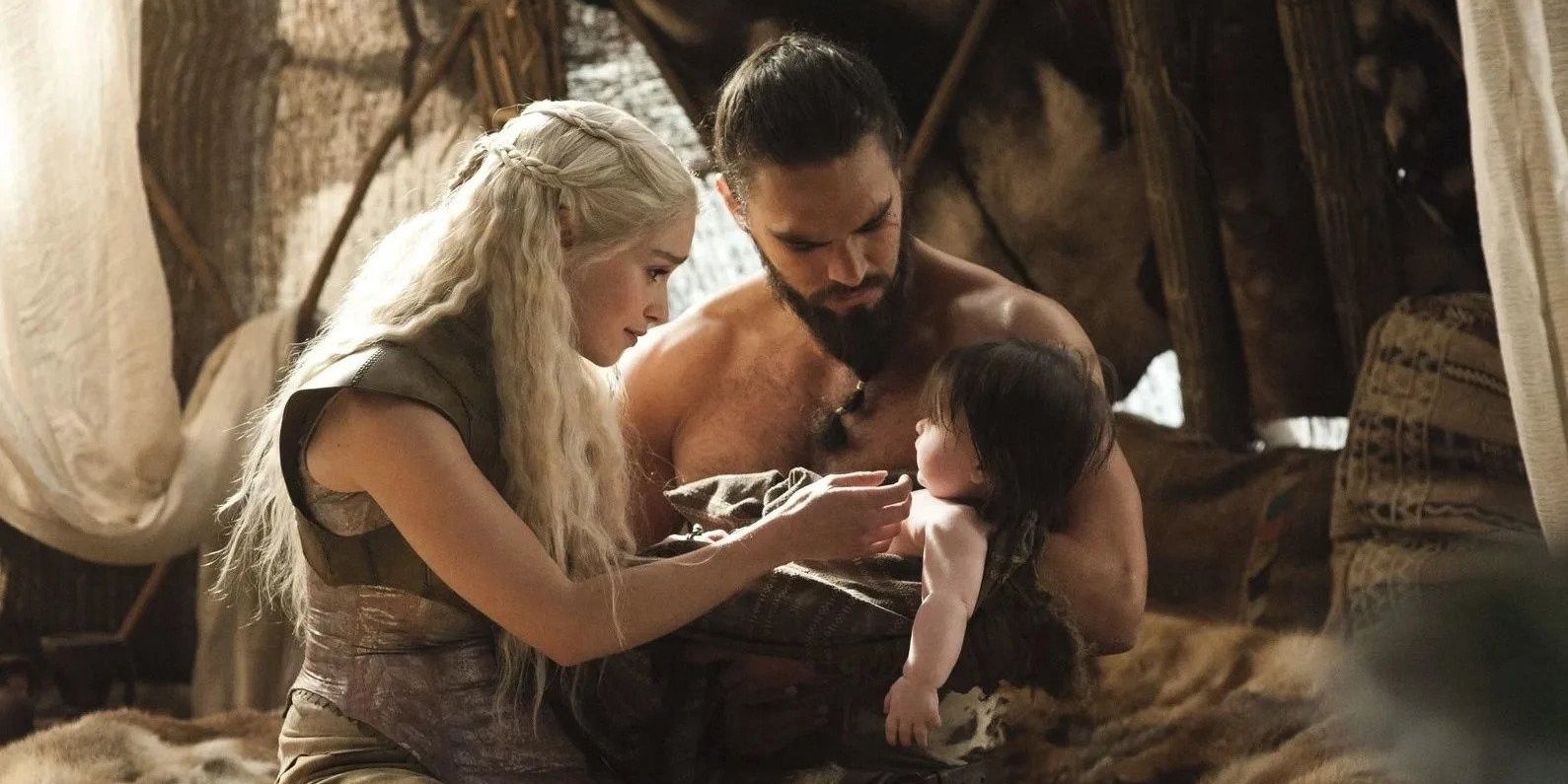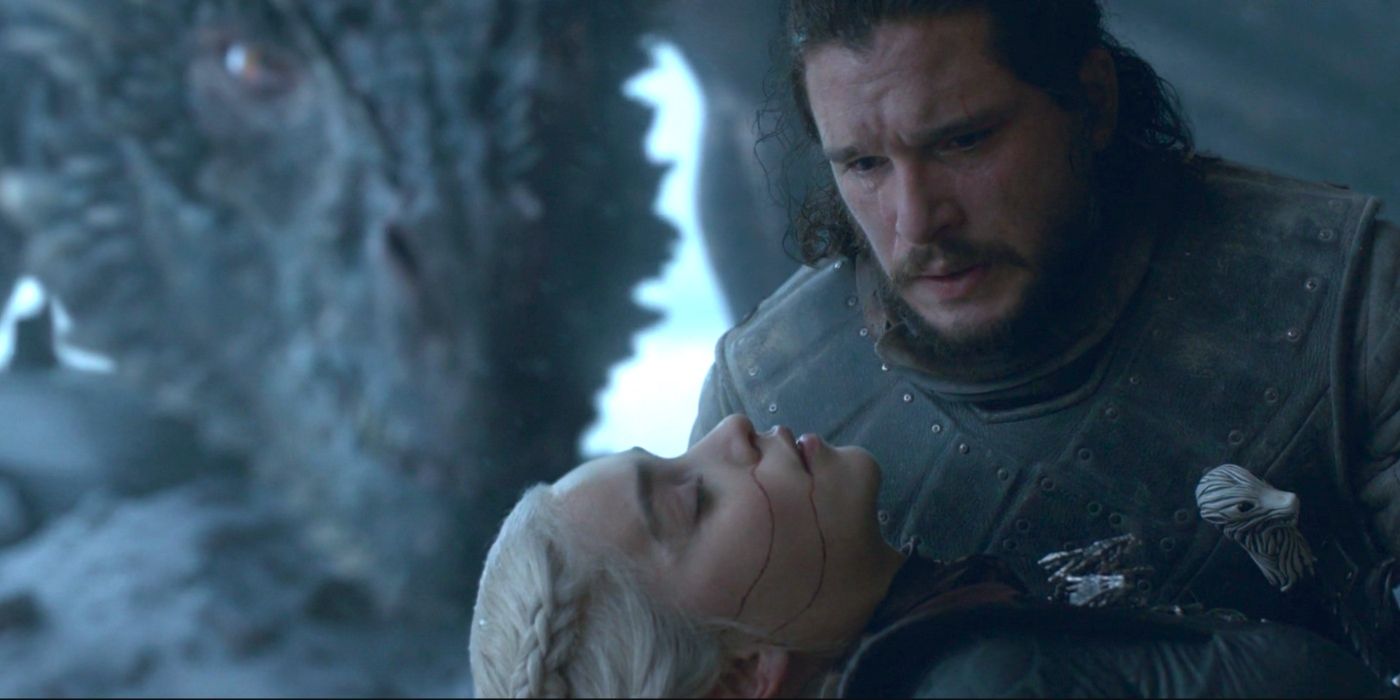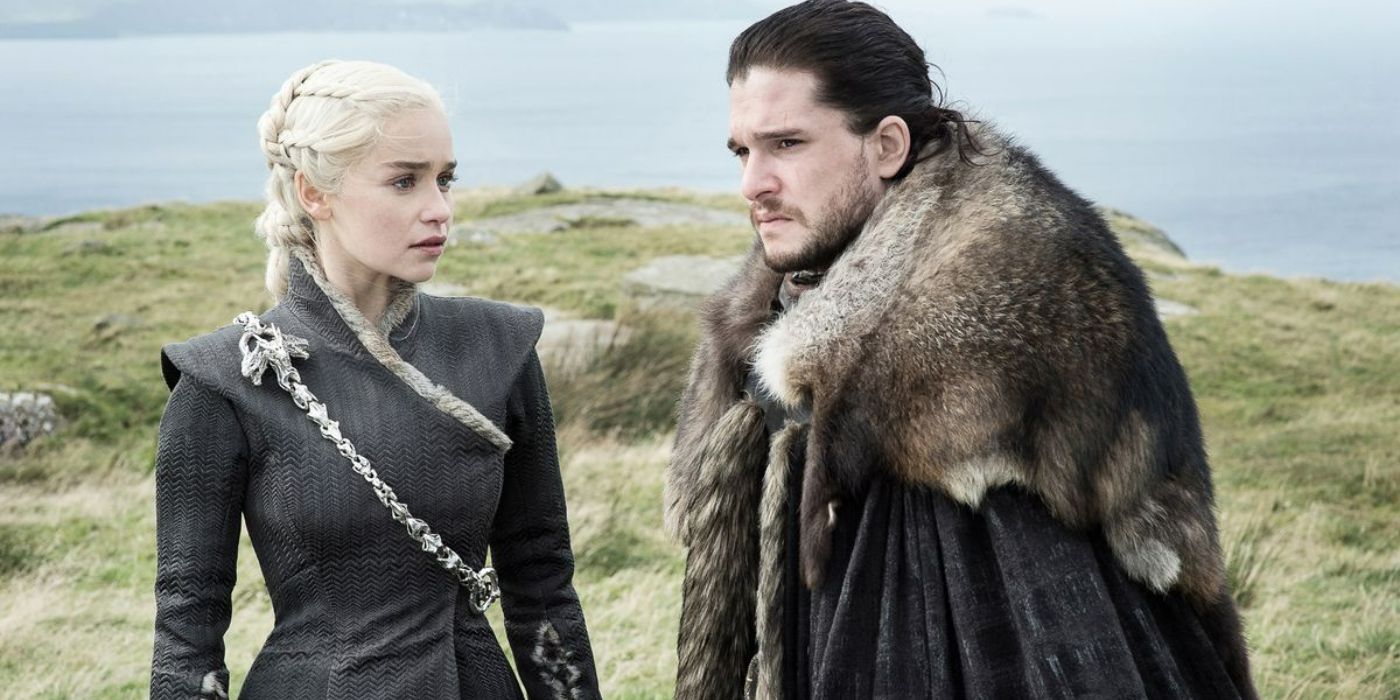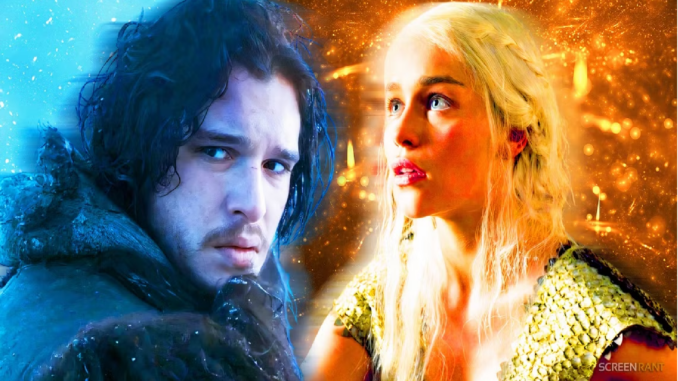
Game of Thrones‘ changes to Daenerys Targaryen’s story ended up having a negative impact on Jon Snow years later. Game of Thrones made several changes to the books with Daenerys’ character and story, ranging from her appearance – in the novels she and other Valyrians have violet eyes – to supporting players and plot lines being scrapped in order to simply and expedite the narrative.
Many of the changes had their own butterfly effect, removing key parts of Dany’s arc which, ultimately, meant her Game of Thrones‘ ending felt rushed (and proved extremely controversial). One scene that was crucial for her story is when she has visions in the House of the Undying, which happens in A Clash with Kings and, subsequently, season 2 of the show. With links to the Prince That Was Promised prophecy, her dragons, and her destiny, the changes didn’t just hurt Dany’s arc, but Jon’s too.
What Game Of Thrones Cut From Daenerys Targaryen’s House Of The Dying Visions
There Was A Lot More To It In A Song Of Ice & Fire
Daenerys’ visions at the House of the Undying do take place in Game of Thrones‘ season 2 finale, “Valar Morghulis.” There, she sees a throne room ostensibly covered in snow, though it was ash when the vision was realized in Game of Thrones season 8. She also passes through the Wall, and reunites with Khal Drogo and their son, Rhaego. It’s not a bad sequence on its own terms, but is a stark contrast to the books, where Dany experiences over a dozen different visions and warnings.
Everything Daenerys Sees In Her House Of The Undying Visions In A Clash Of Kings
- “a beautiful woman sprawled naked on the floor while four little men crawled over her.”
- A scene depicting what appears to be the deaths at the Red Wedding, with people dead at a table, and a man with the head of a wolf sitting on a throne (indicating Robb Stark’s demise).
- A house with a red door and a lemon tree in the yard. This is from Daenerys’ childhood, and she thinks about it a lot in the books; she believes it’s in Braavos, but it’s somewhat of a mystery, as the climate there doesn’t support growing trees like that one.
- An old man, seemingly the Mad King, Aerys II Targaryen, sitting on the Iron Throne, in a room surrounded by the skulls of dead dragons, showing the end of the Targaryen dynasty.
- Rhaegar Targaryen, speaking to a woman holding a newborn baby called Aegon, with Rhaegar saying “he is the Prince That Was Promised.” This could be his first son, thought to be killed by the Mountain, or it could be Jon Snow.
- Wizards, who say they are the Undying of Qarth, in a great hall, who give her several vague, prophetic messages. These include “three heads has the dragon;” and ” three fires must you light… one for life and one for death and one to love… three mounts must you ride… one to bed and one to dread and one to love… three treasons will you know… once for blood and once for gold and once for love…”
- Viserys Targaryen’s death with his golden crown, as seen in Game of Thrones season 1, episode 6.
- A vision of “A tall lord with copper skin and silvergold hair stood beneath the banner of a fiery stallion.” This appears to be the future of her son, Rhaego, said to be the “stallion that mounts the world,” if he had survived.
- Rubies flying from the chest of a prince, most likely Robert Baratheon defeating Rhaegar Targaryen at the Trident, as the rubies from his chest plate – smashed by Robert’s warhammer – were a key part of that story.
- A red sword in the hand of a “blue-eyed king” who “cast no shadow,” perhaps Stannis Baratheon.
- A cloth dragon on poles.
- A great stone beast taking flight and breathing shadow fire.
- A corpse on a ship, “eyes bright in his dead face, grey lips smiling sadly.”
- A blue flower growing from a chink in a wall made of ice. Lyanna Stark was given a blue flower by Rhaegar around the time of what’s believed to be their first meeting, and that combined with the Wall means this symbolizes Jon Snow’s parentage.
- Mirri Maz Duur’s ritual that was done to save Khal Drogo is alluded to, with shadows dancing in a tent, as seen in that sequence.
- The red door again, with a little girl running towards it – most likely this is Daenerys.
- Mirri Maz Duur in the flames, “a dragon bursting from her brow.”
- A bloody corpse being dragged behind a silver horse.
- A white lion running through tall grass.
- Naked crones coming out of a lake, bowing their heads to her.
- Daenerys on her horse, going past thousands and thousands of slaves who yell “mother.”
Speaking to Dartmouth Alumni Magazine back in 2017, co-showrunner David Benioff explained the thinking behind some of the show’s book changes in general (not specific to the House of the Undying), saying:
“It’s something that we told George a long time ago: For this to work, we have to make choices that are sometimes going to deviate from your intentions. Then there are a lot of things that work in prose that just wouldn’t work on screen, and part of that is just the nature of the beast. In George’s books so much of the story takes place in the characters’ minds. That’s one of the weaknesses of television compared to fiction – what people are thinking cannot be conveyed as easily, other by than having long voiceover monologues, which are boring.”
On the one hand, it’s easy to see why Game of Thrones cut down the sequence. There’s a lot packed in there, and the meanings of various parts of it remain debated and theorized over to this very day by die-hard A Song of Ice and Fire fans. For general TV audiences, then it may well have been too confusing to include everything, especially if the writers already knew there’d be some deviations (for instance, the “cloth dragon” is most likely a reference to Young Griff, aka Aegon Targaryen, a character the show cut).
| A Song of Ice and Fire books in release order | |
|---|---|
| Title | Year |
| A Game of Thrones | 1996 |
| A Clash of Kings | 1998 |
| A Storm of Swords | 2000 |
| A Feast for Crows | 2005 |
| A Dance with Dragons | 2011 |
| The Winds of Winter | TBA |
| A Dream of Spring | TBA |
On the other hand, there’s so much in there that could’ve been kept. Things like the Red Wedding foreshadowing, the appearance of (and nods to) Rhaegar, and the blue flower growing in the Wall aren’t just vague, indecipherable visions, but clearly and directly apply to the events of the story and its most important characters. Plus, this adds so much to the fantasy and magic of the series, the powerful notions of prophecy and destiny, and plants the seeds of betrayal in Dany’s mind, all of which are central to her arc.
Daenerys’ House Of The Undying Visions Could’ve Made Jon Being A Targaryen Better
It Also Would’ve Made His Real Name Less Confusing
For Jon Snow specifically, including more of Daenerys’ House of the Undying visions would’ve improved the show’s eventual confirmation that R+L=J, and he is indeed the son of Rhaegar Targaryen and Lyanna Stark. Even just on quite a basic level, it at least would’ve added more weight to the idea in the show itself and provided more clues in that canon: the theory was always likely, but a lot more of it was driven by what’s in the books than what we saw on-screen for the first few years.
It would also have added to the idea of Jon potentially being the Prince That Was Promised, helping to solidify the notion it was between him and Daenerys and, thus, that it had to be a Targaryen (something supported by Aegon the Conqueror’s song of ice and fire dream in House of the Dragon). That itself could have added more meaning to his parentage, since Jon being a Targaryen didn’t matter too much in the end, a common point of criticism when it comes to season 8.
This also would have benefited his and Daenerys’ relationship, and how she spiraled after learning he was a Targaryen. That would have made more sense, and had greater heft, if she’d had some of those visions earlier, being told of Rhaegar’s son as the Prince That Was Promised, of potential betrayals and a cloth dragon, alongside imagery directly relating to Jon himself. It could’ve connected all the way back to that moment, making her reaction more understandable.
That Jon then killed Daenerys could be more poignant, too. Daenerys is told that one betrayal will be for love; this could’ve linked in the vision with Jon and Tyrion’s conversation, of how love is the death of duty, and sometimes duty is the death of love. Jon killing Daenerys is both killing for love – to protect his family, and perhaps, in his mind, to save Dany from herself and becoming something even worse – but also the death of love.
In the show, there’s no real explanation for why [Jon] was called Aegon when Rhaegar already had a son by that name.
It also, quite simply, could have improved Jon Snow’s Targaryen name. In the show, there’s no real explanation for why he was called Aegon when Rhaegar already had a son by that name. But using the House of the Undying vision, there is a logical reason: that Rhaegar believed the Prince That Was Promised had to be called Aegon. It’s only a small detail, but it’s those details that help make A Song of Ice and Fire great, and would have enhanced Game of Thrones as well.
